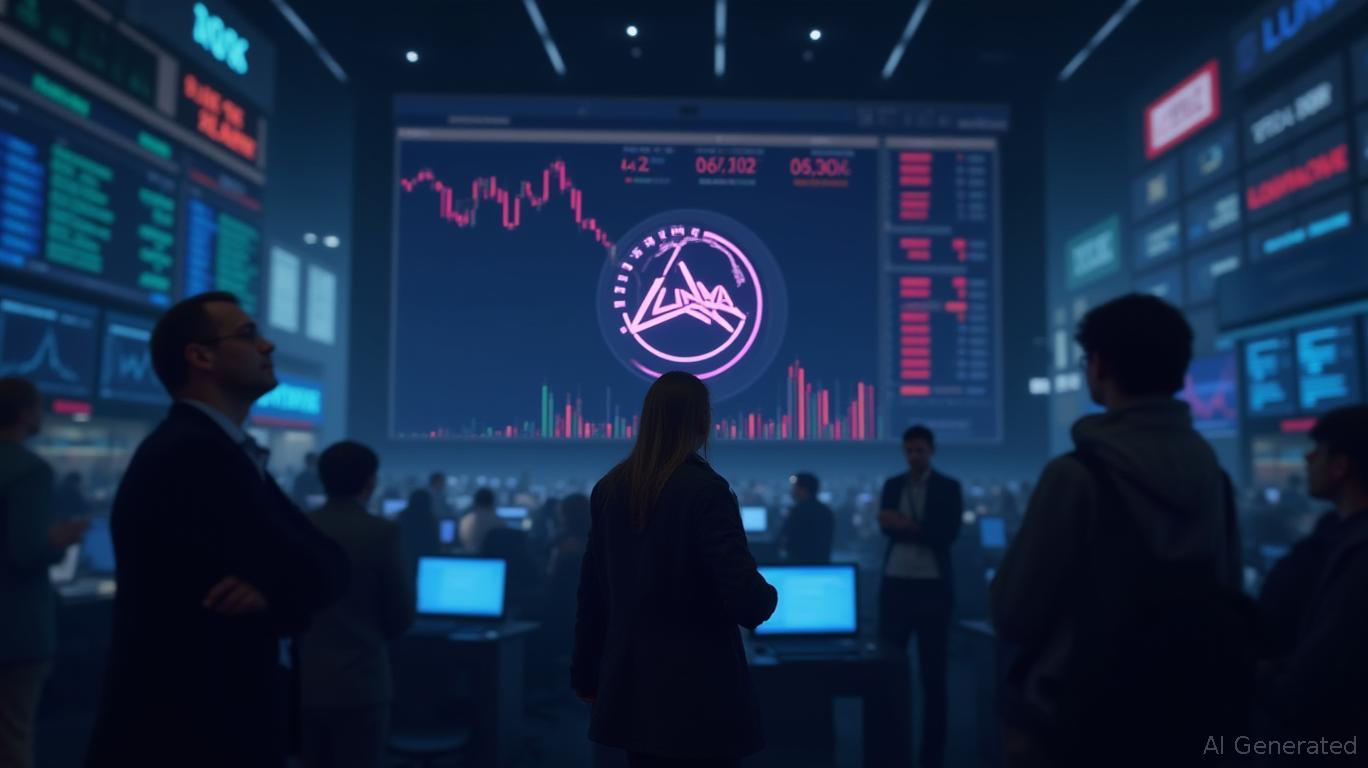AInvest Newsletter
Daily stocks & crypto headlines, free to your inbox
On May 30, 2025, LUNA’s price fell 16.65% over 24 hours to $0.18015, marking a steep decline from its value a year prior. Over seven days, the token dropped 610.81%, and over 30 days, it lost 142.5% of its value. Year-to-date performance was particularly volatile, with a 5,672.52% decline from its 2024 high. The sharp selloff underscored growing investor skepticism toward the token’s stability mechanisms and regulatory risks.
A pending investigation into LUNA’s governance
has amplified concerns among holders. Authorities are examining claims that the token’s algorithmic design failed to maintain its peg to the U.S. dollar, a key feature marketed to investors. Questions about transparency in reserve management and risk disclosure have further eroded confidence. While no formal charges have been filed, the probe has drawn attention to broader regulatory challenges facing algorithmic stablecoins.LUNA’s price collapse coincided with renewed doubts about its ability to sustain its value. The token’s design relies on an algorithmic system intended to stabilize its price by adjusting supply in response to market demand. However, critics argue that this mechanism has proven unstable under pressure, particularly during periods of high volatility. Analysts highlighted that the system’s reliance on external assets to back its value has created systemic risks, compounding uncertainty during sell-offs.
Market analysts emphasized that LUNA’s decline reflects deeper structural flaws. “The token’s algorithmic model struggles to maintain liquidity during downturns, exacerbating price volatility,” said one analyst. Projections indicate that without significant reforms to its reserve structure and governance, LUNA’s long-term viability remains in question.
The selloff has prompted investors to reassess their exposure to algorithmic stablecoins. Portfolio managers noted reduced appetite for tokens lacking traditional collateral or regulatory oversight. “The market is demanding greater transparency and safeguards for such instruments,” stated a senior investment strategist.
Technical data revealed that LUNA’s trading volume has shrunk significantly, with liquidity pools failing to absorb large sell orders. This has created a self-reinforcing cycle: reduced liquidity fuels further price declines, while the token’s falling value discourages new buyers. Analysts warned that without intervention to bolster liquidity or address governance issues, recovery prospects remain dim.
LUNA’s plummet on May 30, 2025, signals a critical inflection point for algorithmic stablecoins. The token’s struggles highlight the risks inherent in uncollateralized models and the need for robust regulatory frameworks. While supporters argue that the design can be refined, current conditions suggest that rebuilding trust will require substantial changes to governance, reserve management, and market transparency. For now, investors are scaling back exposure, leaving LUNA’s future uncertain.

Delivering real-time analysis and insights on unexpected cryptocurrency price movements to keep traders ahead of the curve.

Dec.17 2025

Dec.17 2025

Dec.17 2025

Dec.17 2025

Dec.16 2025
Daily stocks & crypto headlines, free to your inbox
Comments
No comments yet